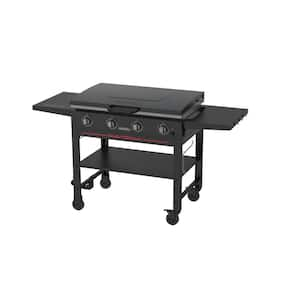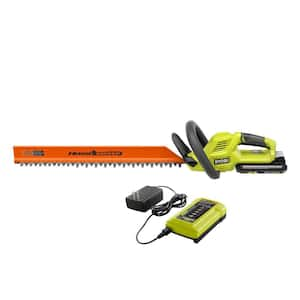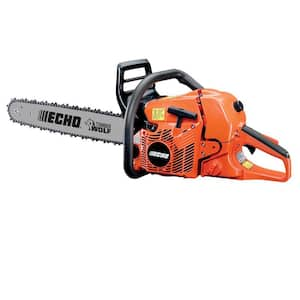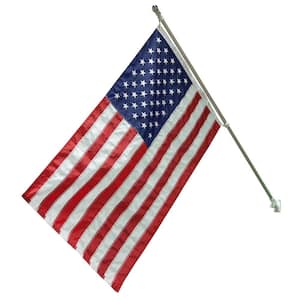Do you have what you need to make your garden grow?


Garden Center
Store Hours
Mon-Sat:
6:00am - 10:00pm
Sun:
7:00am - 8:00pm
Curbside:
09:00am - 6:00pm
Location
Popular at Your Garden Center
Summer Garden Center Supplies
Popular Garden Center Live Plants
Garden Project Calculators
;Resize=(703,395.44))
Grass Seed Calculator
When you're ready to seed your lawn, our calculator helps you estimate the amount of grass seed you'll need to get the job done.
;Resize=(703,395.44))
Mulch Calculator
Enter your preferred material, the square footage and mulch depth of the coverage space for accurate results.
;Resize=(703,395.44))
Fencing Calculator
We'll calculate the amount of fencing you should purchase based on your property needs.
Shop Outdoor and Garden Brands
Frequently Asked Questions About Your Store
How can I treat weeds in my vegetable garden?
Weeds might start peeking through in the garden beds, even if you put down mulch or a landscape fabric liner to keep them at bay. Pull weeds from the root in edible flower or vegetable gardens, and dig up the roots if the weed snapped off at the surface. Be sure to get them before they go to seed. If you'd like to treat weeds with weed killer, check that it's safe for pollinators and pets — and wear a respirator and heavy rubber gloves to ensure that it doesn't touch your lungs or your skin.
Is it possible to fix scorched grass?
The solution for how to get burnt grass green again is easy: Fix the scorched spot with a good long drink. Continue to water it regularly. It should perk up within the next week. On the other hand, the method for how to treat grass from dog urine isn't as simple. Grass damaged by pets must be removed, neutralized, and replaced in fresh soil with new sod, grass, or patch and repair grass seed.
What's the best time to water?
If you can water during the early morning or in the evening, that's ideal. Watering when it's hottest outside means much of the moisture will evaporate. This applies to whatever you're growing: gardens, lawns, and trees. Whenever you water, give all the plants a thorough drink, and don't skip it just because it's not the perfect time. The plants still need hydration, regardless of the time on the clock. Depending on your grass type, climate, and lawn health, you may also want to add a lawn fertilizer.
Does my flower garden need fertilizer?
Once you've planted your flowers or veggie plants, you'll need to make sure they stay hydrated and well-fed. Choose a synthetic or an organic fertilizer and give your garden a boost. You can even find one that's formulated for your plants, whether you need a flower fertilizer, vegetable fertilizer, citrus tree fertilizer, or general garden fertilizer blend. Follow the application instructions and don't add extra. Always water immediately after, as directed, so the plants won't be burned by the fertilizer.
How can I keep cool this summer?
When you need a break from working in the yard, shelter under a covered gazebo or patio umbrella. If you have sturdy structures like a house or a shed, make your own shade by attaching shade sails and awnings. But sometimes shade isn't enough because it's just too humid out. That's when a misting fan or patio mister can help cool the air and turn an uncomfortable afternoon into a relaxing day. Return to lounging in the sun when that chilled air is ready.
How do I entertain on the patio?
Backyard entertaining is whatever you'd like it to be — it doesn't have to be a BBQ party. If you plan on firing up the grill, make sure you know how to clean a grill when you're done. Many people relax outdoors and chat away the afternoon or maybe cook a meal in an outdoor kitchen. However you bond with friends, extend the fun into the evening with proper outdoor lighting and a bug-free yard without pesky mosquitos.
Garden Project Ideas

Protect wood from carpenter bees with our guide on sealing surfaces, using traps, and applying safe pest control methods.

Check out our tips on banishing gnats indoors and out using traps, sprays, and moisture control to keep your home pest-free.

Safely remove poison ivy with our guide on protective gear, cutting techniques, and herbicide use for effective eradication.

Maintain a healthy lawn using organic methods like manual weeding, natural herbicides, and proper lawn care practices.

Grow apples successfully with our guide on choosing varieties, planting, pruning, and pest control for a bountiful harvest.

Cultivate thriving grapes with our step-by-step tips on site selection, trellising, pruning, and disease prevention.
The Home Depot Garden Center at Arden Arcade
Explore Our Garden Center 4th of July Sale
Greet the 4th of July with a yard that's dressed to impress. Our huge 4th of July Sale can help you do it. Let your great outdoors help you enjoy the festivities with your family and friends. Get that patio furniture or grill you've had your eye on and invite your guests to relax with full bellies of delicious food. Save now and use these long-term investments for years of future cookouts.
Set Up For Summertime
As we continue deeper into summer, your landscaping and garden will weather more sun and heat than earlier in the year. That means you'll need to consider how to keep things cool. Just like we can get sunburned, plants can dry out, grass can get scorched, and trees can lose their leaves early. We've got advice to help you, your lawn, and your garden make it through the hotter months with flying colors.
Keep Your Lawn Tidy
As the weeks tick by, the sod or grass seed you planted will grow taller than what's ideal. Get it looking fresh again with a little TLC. Keep the lawn in check with a push lawn mower and a string trimmer to knock down any tall grass around sidewalks, buildings, or fences.
Bushes, shrubs, and trees climb toward the sun and lose their shape over time. They'll be growing fast, filled with blooms and buds before you know it. Prune them to show off their beauty with garden shears and hedge trimmers. It's best to leave major tree maintenance and tree topping to the pros, but you may want to use a pole saw for minor trims and a chainsaw for small branches on trees and bushes.
Watch Your Garden Thrive
Much of your garden's upkeep comes down to balancing sun and water. You'll need both to keep plants growing and flowering. A general rule when watering flowers and plants is to aim the water at the roots. A garden hose, sprinkler or sprinkler system, or drip irrigation system will work well. You don't need to water the blooms themselves. Many flowers droop and wilt when they get wet, but they'll recover just fine once they dry off. Succulents are the exception to basic watering rules, so look up your specific succulent varieties to optimize their care.
In addition to watering, keep an eye on your plants' nutrient intake. Use fertilizer as recommended. We've even got fertilizers to match the plant types you're growing so they'll enjoy a balanced diet with the right nutrients.
Vertical Edible Gardening
Grow produce vertically for a smart use of space. Many vegetable plants are vines and well-suited to climb a fence or trellis, so plant them next to one. The key to success is supporting the stem, fruit, and branches. This is so the weight of the plant doesn't snap the the stem or branches. Fasten the plant to a fence, pole, or trelllis with string, plant ties and wires, garden wire, or fabric strips. Be sure to attach each plant loosely. Then, the stem has room to grow wider and the leaves and branches can sway in the breeze.
Strawberries, watermelon, squash, cucumbers, and tomatoes need support as they bear fruit. Squash and melons require hammocks made of old nylons, string, a sling, or other stretchy fabric to support the weighty produce. All of these plants take up less space on the ground this way, which allows you to fit even more plants or have walking room in between.
Vines as Decorative Shade
Plant vines near an arched arbor or trellis so they'll climb it and give you both beauty and shade. Go with vine plants that are native to your area to attract pollinators. Grape vines are a classic choice, but they take time to mature, so you'll have shade without grapes for a few years. Remember to match your vine plants to how much sunlight you receive, as some like full sun and others don't. As a bonus, many vines put out sweet-smelling flowers with a delightful fragrance you can enjoy as you cool off in the shade.
Find Your Summertime Supplies Today
No matter if your perfect summer includes gardening, relaxing, or starting those outdoor DIY projects, we've got the supplies you need to keep your days flowing with ease. Make the most of these long evenings and early mornings to enjoy all the season has to offer. Shop online at your leisure, on our app anywhere you like, or in the aisles of your Arden Arcade Garden Center.
Nearby Stores
Find Another Store
8000 Folsom Blvd
Sacramento, CA 95826
3.71 mi
Mon-Sat: 6:00am - 10:00pm
Sun: 7:00am - 8:00pm
3611 Truxel Rd
Sacramento, CA 95834
5.38 mi
Mon-Sat: 6:00am - 10:00pm
Sun: 7:00am - 8:00pm
6001 Madison Ave
Carmichael, CA 95608
6.33 mi
Mon-Sat: 6:00am - 10:00pm
Sun: 7:00am - 8:00pm






)
)
;Resize=(300,300))
/17_514245_S_012_Product%20Image%20(square).jpg?im=Resize=(300,300))
)
/2023_P2_Rain_Barrels_Product%20Image%20(square).jpg?im=Resize=(300,300))
;Resize=(300,300))
;Resize=(300,300))
)
)
;Resize=(300,300))
)
)
)
)
;Resize=(300,300))
;Resize=(300,300))
)
)
)
;Resize=(300,300))
;Resize=(300,300))
)
;Resize=(300,300))
;Resize=(300,300))
)
/12_SOIL_B_0420_Social%20media%20(square).jpg?im=Resize=(300,300))
;Resize=(300,300))
;Resize=(300,300))
;Resize=(300,300))
)
;Resize=(300,300))
)
;Resize=(300,300))
;Resize=(300,300))
/18Patio_Camden_Seagrass_5pcSeating_Planters_302468736_DTL3_L_Social%20media%20(square).jpg?im=Resize=(300,300))
;Resize=(300,300))
)
;Resize=(300,300))
;Resize=(300,300))
)
)
.jpeg?im=Crop,rect=(363.69230769230774,1.2307692307692308,958.7692307692308,958.7692307692308);Resize=(300,300))
;Resize=(300,300))
)
)
)
;Resize=(300,300))
;Resize=(300,300))
)
;Resize=(300,300))
)
)
;Resize=(300,300))
)
;Resize=(300,300))
)
;Resize=(300,300))
;Resize=(300,300))
)
)
)
;Resize=(300,300))
;Resize=(300,300))
/Dorado_Tropical_Combo_14in_Product%20Image%20(square).jpg?im=Resize=(300,300))
;Resize=(300,300))
/2023_2_Cactus_Plants_Product%20Image%20(square).jpg?im=Resize=(300,300))






































